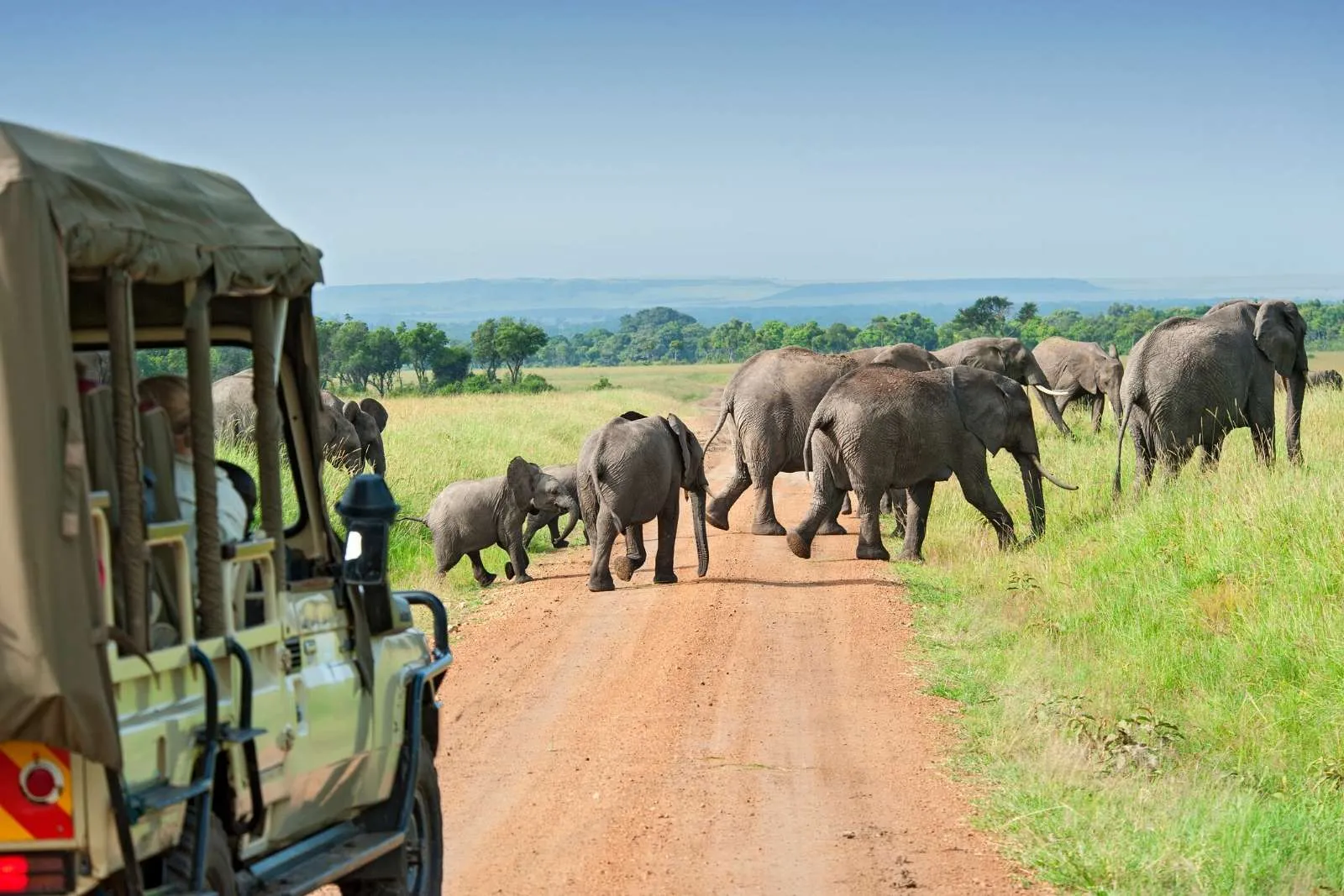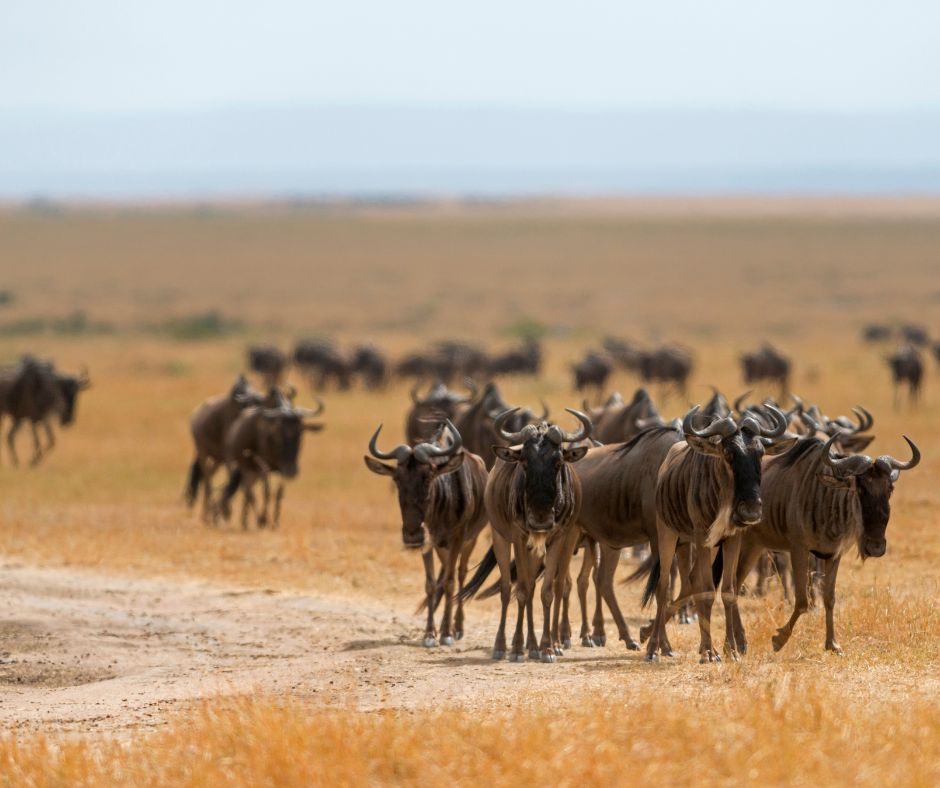Samburu National Reserve is one of Kenya’s most unique and captivating wildlife destinations, located in the northern region of the country. Known for its stunning landscapes, distinctive wildlife, and rich cultural heritage, Samburu is a must-visit for those seeking an authentic African safari experience.
Location and Size
- Location: Samburu National Reserve is situated in the northern part of Kenya, about 350 kilometers (220 miles) from Nairobi. It lies along the banks of the Ewaso Ng’iro River, a key water source in the region, making it an oasis in the otherwise dry and arid landscape of northern Kenya.
- Size: The reserve spans approximately 165 square kilometers (64 square miles), although the greater Samburu ecosystem extends further, including the neighboring Buffalo Springs National Reserve and Shaba National Reserve, which together create a vast wildlife area.
Landscape and Terrain
Samburu offers a distinctive and beautiful landscape, vastly different from Kenya’s more famous savannah parks like the Maasai Mara or Amboseli. The terrain consists of rugged hills, woodland, and riverine forests, with the Ewaso Ng’iro River running through the reserve. The river is a vital water source for wildlife, and many animals gather along its banks, making it a prime area for game viewing.
- Dry and Arid Climate: The reserve’s climate is typically hot and dry, with the region receiving limited rainfall. The dry season (from June to October) is an ideal time for safaris, as wildlife congregates around water sources, making animal sightings more frequent.
Wildlife and Biodiversity
Samburu is unique for its rich variety of wildlife, including several species that are not typically found in Kenya’s southern parks. It is especially known for the Samburu Special Five — five animals that are found in this region but are rare or absent in other parts of the country:
- Grevy’s Zebra: A rarer species of zebra with narrow stripes, mainly found in Samburu and surrounding areas.
- Reticulated Giraffe: Characterized by its striking white, net-like patterns on its body, unlike the common giraffe species.
- Somali Ostrich: A distinct species of ostrich with blue legs and a lighter plumage compared to other ostrich species.
- Beisa Oryx: A type of antelope with long, straight horns, adapted to the arid conditions of northern Kenya.
- Gerenuk: A type of gazelle known for its long neck and ability to stand on its hind legs to browse leaves from tall shrubs and trees.
In addition to the Samburu Special Five, the reserve is home to many other iconic African wildlife species, including:
- Big Cats: Samburu has an abundance of lions, leopards, and cheetahs, making it an excellent destination for predators.
- Elephants: Samburu is known for its large population of elephants, and the area is home to some of the largest tuskers in Africa.
- Other Wildlife: The reserve also hosts numerous species such as buffaloes, hippos, crocodiles, warthogs, impalas, zebras, and wildebeests. The birdlife is diverse, with species such as vultures, eagles, and hornbills.
Cultural Heritage
The Samburu people, who the park is named after, are a semi-nomadic pastoralist community closely related to the Maasai. They have a rich cultural heritage and live within and around the reserve, contributing to the area’s unique charm. Visitors can learn about their traditions, customs, and way of life, often through cultural visits to their villages, where they can witness traditional dances, songs, and rituals.
Activities
Samburu offers a variety of safari activities that make the experience unique and memorable:
- Game Drives: The main activity in Samburu is the game drive, where visitors explore the park in search of wildlife. Morning and evening game drives offer the best chances to view predators, including lions, leopards, and cheetahs. The Ewaso Ng’iro River is a particularly popular area for game viewing as wildlife frequently gather there.
- Guided Nature Walks: For those interested in getting closer to nature, Samburu offers guided walking safaris. These walks, led by Maasai or Samburu guides, provide a deeper understanding of the ecosystem, focusing on smaller animals, plants, and the environment.
- Cultural Visits: Visitors can experience the unique Samburu culture by visiting local villages, learning about traditional Maasai and Samburu customs, and engaging in cultural exchanges. This provides insight into the semi-nomadic lifestyle of these communities and their close relationship with the land.
- Birdwatching: The reserve’s varied habitats provide great opportunities for bird watching, with over 450 species recorded, including eagles, hornbills, bustards, and waders along the river.
Best Time to Visit
The best time to visit Samburu is during the dry season, from June to October, when the wildlife congregates around water sources, making it easier to spot animals. The weather is generally warm and dry, and the game viewing is at its peak. However, April and May can be wet and less ideal for game drives due to the rains, though fewer tourists visit during this time, and the landscape is lush and beautiful.
Accommodation
Samburu offers a wide range of accommodation options to suit various budgets and preferences:
- Luxury Lodges: For high-end experiences, there are several luxury lodges and tented camps, including:
- Samburu Intrepids Luxury Tented Camp: A popular choice for those seeking comfort and close proximity to the reserve’s wildlife.
- Saruni Samburu: An exclusive luxury camp that combines modern comforts with traditional African style, located in a prime game-viewing area.
- Mid-Range Camps: For those seeking comfortable but more affordable options, there are mid-range camps such as Sasaab Lodge and Elephant Bedroom Camp, offering a more rustic experience with access to modern amenities.
- Budget Accommodation: Samburu also has more budget-friendly options, like Samburu Sopa Lodge and Shaba Lodge, offering good value for money while still providing excellent access to game viewing.
Conservation Efforts
Samburu National Reserve is actively involved in conservation efforts to protect its wildlife and environment. The reserve is managed by the Samburu County Government, and there are partnerships with local communities to ensure sustainable tourism and wildlife protection. The reserve is part of the greater Samburu-Buffalo Springs-Shaba ecosystem, and together they form an important conservation area for northern Kenya’s wildlife. Poaching has been a challenge in the past, but anti-poaching efforts and community involvement have led to a decline in illegal activities.
How to Get There
- By Road: Samburu is about a 5-6 hour drive from Nairobi. The journey involves driving along the Nairobi-Isiolo highway and then following a road to the entrance of the reserve. The roads can be rough, so a 4×4 vehicle is recommended.
- By Air: For a quicker and more convenient option, visitors can fly directly to the Samburu airstrip from Nairobi or other regional airports. There are scheduled flights by Safarilink and Airkenya to the reserve’s airstrips.
Conclusion
Samburu National Reserve offers an authentic and enriching safari experience in the heart of northern Kenya. With its distinct wildlife, the Samburu Special Five, and stunning landscapes, it is a perfect destination for those looking to experience Kenya’s more remote and untouched wilderness. The reserve also provides an opportunity to engage with the local Samburu community, offering visitors a deeper connection to the culture and way of life in this unique region. Whether you’re seeking exciting game drives, cultural encounters, or peaceful moments by the Ewaso Ng’iro River, Samburu provides a truly unforgettable safari experience.








